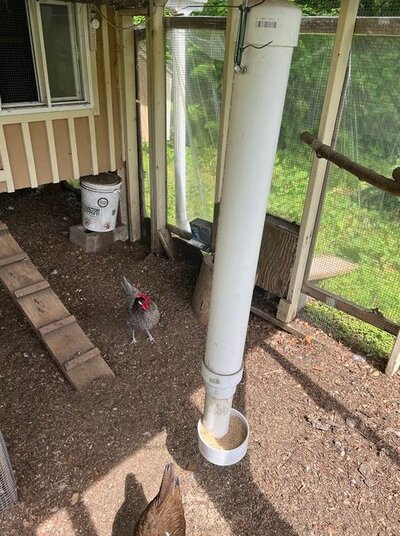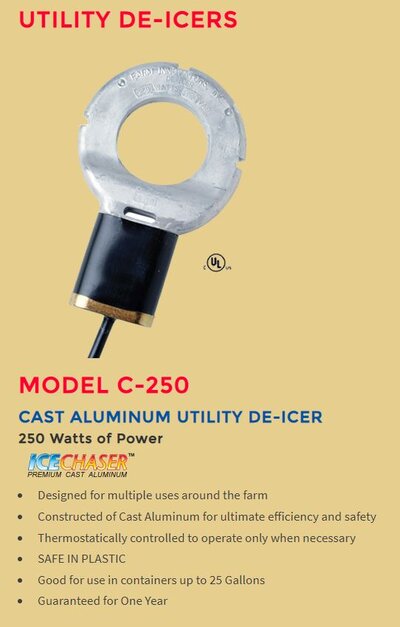Kidwantschickens
Songster
So when all is said and done we will have 12-13 adult he s. I would like to make this as efficient as possible so if we want to have 2-3 days away or late nights or busy weekends (all common)that the chickens aren't adding to my stress.
So I would really like a 10+ gallon waterer so I don't have to fill it every day, and a feeder that can hold at least a week's worth of feed. When they are older I figure we will need a 50# bag of feed every 3 weeks.
With that what is the best and most economical way to do this?
I've thought about 2 5 gallon buckets (have poultry nipples on the way) but that will be a disaster In the winter.
I've thought about a bucket feeder with the 90 degree angle PVC. Does one allow for 12 chickens to feed if there are only 4 holes?
Sometimes DIY isn't cheaper, would it be better to buy something? I've seen a 12g waterer for 69 or so. Seems like two buckets with 4-6 nipples each would be way cheaper.
Tips? Ideas? Something that can hold 10+ gallons of water?
So I would really like a 10+ gallon waterer so I don't have to fill it every day, and a feeder that can hold at least a week's worth of feed. When they are older I figure we will need a 50# bag of feed every 3 weeks.
With that what is the best and most economical way to do this?
I've thought about 2 5 gallon buckets (have poultry nipples on the way) but that will be a disaster In the winter.
I've thought about a bucket feeder with the 90 degree angle PVC. Does one allow for 12 chickens to feed if there are only 4 holes?
Sometimes DIY isn't cheaper, would it be better to buy something? I've seen a 12g waterer for 69 or so. Seems like two buckets with 4-6 nipples each would be way cheaper.
Tips? Ideas? Something that can hold 10+ gallons of water?





 !
!
